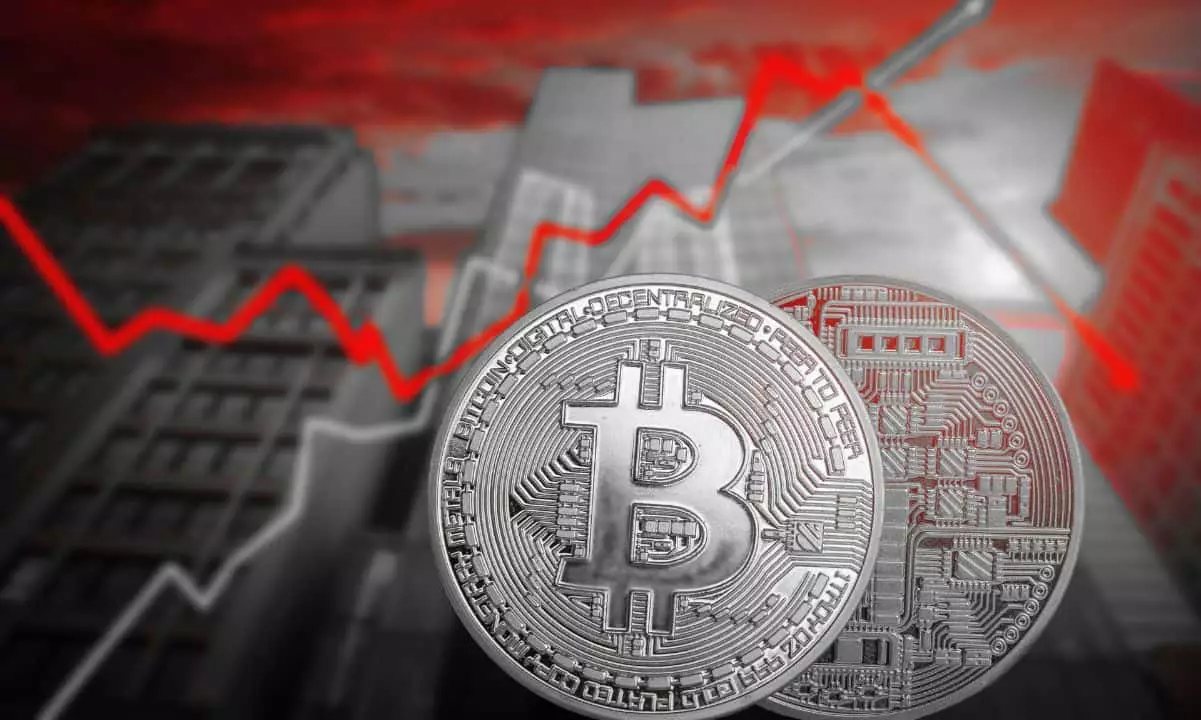Recently, the cryptocurrency market had every reason for fleeting excitement, particularly with Bitcoin (BTC) taking center stage in a spectacular rally following an announcement by former President Donald Trump. It seems that the ambition to establish the United States as the crypto capital of the world was met with exhilarating approval, especially among traders who reveled in significant gains. The surge in BTC, Ethereum (ETH), and other altcoins echoed optimism, creating a buzz that any crypto enthusiast would thrive on. However, this excitement was short-lived. In a matter of days, the market returned to stagnation and decline, a somber reminder of the fragility of hype-driven trends in the crypto world.
The CryptoQuant analytics platform revealed that the actual demand for Bitcoin was not just tepid but in clear contraction territory, raising eyebrows about the health of this often volatile market. Investors are waking up to the harsh reality that transient spikes in price do not reflect fundamental demand. If anything, Trump’s move has become emblematic of the speculative fever that occasionally takes hold of the crypto space, often leaving behind bitter aftertastes for those who bought into the hype. The so-called “Trump-n-Dump” scenario illustrates just how quickly fortunes can evaporate when the initial thrill fizzles out and reality sets in.
The Role of Institutional Giants and Whales
Every time a notable event occurs in the crypto space—especially one promoted by a high-profile political figure—investor psychology shifts dramatically. The announcement of a Strategic Crypto Reserve created ripples, drawing the attention of not just retail investors but also institutional players. Transactions on crypto exchanges surged as whales, or large holders of cryptocurrencies, took advantage of the “buy the rumor, sell the news” phenomenon. The scale of Bitcoin inflows—jumping from around 500-1,000 hour to over 6,700—bespeaks a larger trend where prominent players set the market’s pace.
This behavior underscores a crucial insight: the dominant presence of whales can either pump a market to heights or plunge it into despair, demonstrating that the individual investor, often at the mercy of these arms of the trading arena, has a limited say in the overall dynamic. The influx of liquidity fueled by these whales, who believe they can outsmart retail investors, can quickly turn into a double-edged sword. The crypto market is perilously imbalanced, and it raises the question of how sustainable any growth reliant on such heavy-handed maneuvering can be.
Analyzing the Executive Order’s Impact
Trump’s subsequent executive order to create a Strategic Bitcoin Reserve deepens this layer of complexity. While it ostensibly aims to legitimize cryptocurrencies by placing them under government auspices, the strategy reeks of paternalism. Establishing reserves made up of forfeited assets tends to sidestep core issues that need addressing if the goal is genuine growth for the digital asset economy. The notion that the U.S. government will neither sell nor acquire additional assets hints at stagnation rather than progress, casting a long shadow over any credentials that might come from this new reserve.
The idea of government intervention in cryptocurrencies often raises enthusiastic reactions, but I’ve found myself skeptical of the efficacy of such measures. The ecosystem thrives on innovation and decentralization, so government involvement, particularly when it involves forfeit assets, feels counterintuitive. Rather than fostering innovation, it seems likely to entrench existing power structures that stifle competition. For the market to experience meaningful growth, the community needs more than opportunistic maneuvers from political figures; it requires genuine reform aimed at regulatory clarity that doesn’t lead to heavy-handed control.
The Demand Dilemma
The overarching message conveyed through these events is that the crypto market suffers from a severe demand deficit. Despite the ostentatious rhetoric surrounding the U.S. becoming a cryptocurrency beacon, fundamental demand must accompany any theoretical framework to push prices to new heights. CryptoQuant’s insistence signals a glaring truth: without robust, sustained interest from investors, price surges will remain tantalizing yet ultimately ephemeral.
The crux of the matter doesn’t lie in the theatrics of speculation but in developing a base of real-world utility for cryptocurrencies. As long as speculative trading continues to dominate the landscape, we will be caught in this cycle of boom and bust. The market’s dependence on price volatility rather than inherent value creates a precarious environment where players react to news cycles instead of fostering long-term investment strategies.
The volatile dance of cryptocurrency reminds us that while excitement is intoxicating, caution and critical analysis pave the way for sustainable growth. The time has come for crypto to rise above the noise and forge a path based on tangible growth rather than transient hype.















